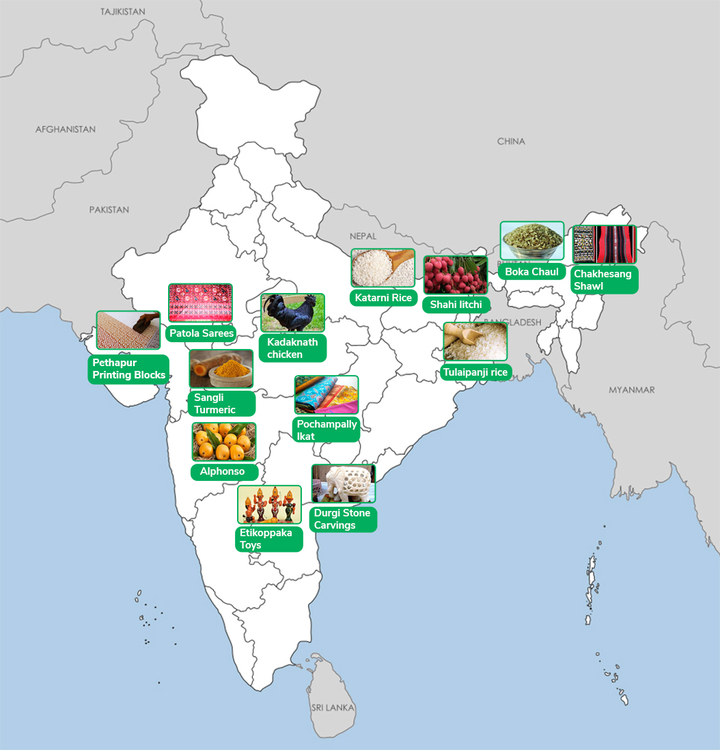The intellectual property of India assigns GI tags to distinct goods from the country. These are given an official name and a sign that corresponds to their location or place of origin.
Darjeeling tea was the first product to be given a GI tag in India.
the Geographical Indications of Goods Act was enacted by India in 1999.
Why GI tag?
It supports local production and helps in mainstreaming and upliftment of the rural and the tribal communities.
These GI tags must not be confused with IPR. GI is a collective right, unlike IPRs which grants protection to individual interest.
GI recently got a logo and a tagline given by the Commerce and Industry Minister to increase the awareness about the IPRs in the country.
LOGO

Here we give you an infographic of the most recent addition in the GI list over the past couple of years (2017-2019 Feb)

Name | Commodity/handicraft/food item | Place |
| Alphonso | Food | Konkan (Western Indian states of Maharashtra, Goa, and the South Indian state of Karnataka) |
| Kadaknath chicken | Food (meat) | Madhya Pradesh |
| Shahi litchi | food | Bihar |
| Patola Sarees | Handicraft | RajKot (Gujrat) |
| Boka Chaul | food | Assam |
| Katarni Rice | food | Bihar |
| Pethapur Printing Blocks | Handicraft/textile making | Gujarat |
| Tulapanji rice | food | Bengal |
| Pochampally Ikat | Handicraft | Telangana |
| Durgi Stone Carvings | Handicraft | Guntur District (Andhra Pradesh) |
| Chakshesang Shawl | Handicraft | Nagaland |
| Etikoppaka Toys | Handicraft | Andhra Pradesh |
| Sangli Turmeric | Food item | Maharashtra |


No comments:
Post a Comment
Useful